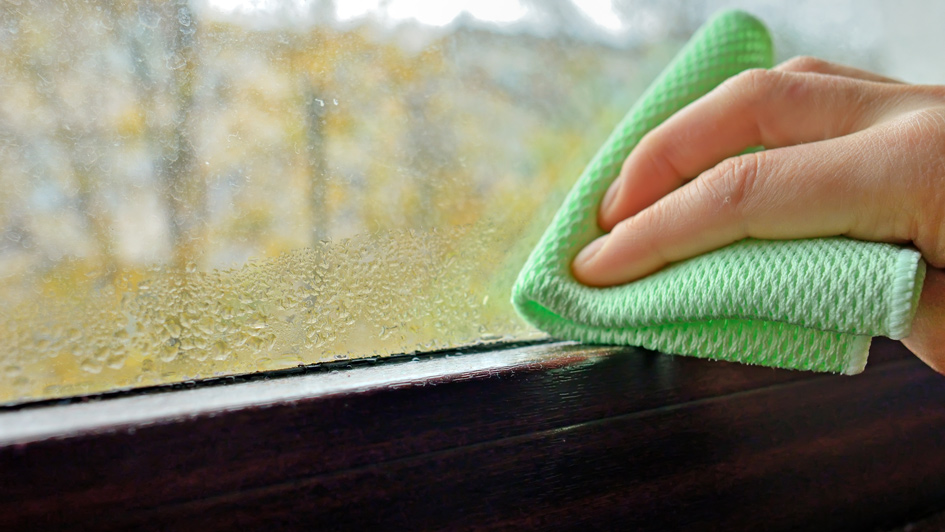
The windows in your home are a portal to the outdoors, a way to draw light in while you take in the view of your garden, yard or other surroundings. The last thing you would want to see is a sweaty window coated in a coating of condensation.
Not only are windows coated in condensation unsightly, they also can be a sign of a larger air-quality problem within your home. Luckily, there’s multiple things you can try to resolve the problem.
What Causes Condensation on Windows
Condensation on the inside of windows is formed by the damp warm air inside your home mixing with the colder surface of your windows. It’s notably commonplace during the winter when it’s much chillier outside than it is in your home.
Inside Moisture vs. In Between Panes
When dealing with condensation, it’s important to understand the contrast between moisture on the inside of your windows in comparison to moisture in between the windowpanes. One is an indoor air quality issue and the other is a window issue.
- Moisture on the inside of a window is created from the warm damp air inside your home condensing on the glass.
- Any moisture you notice between windowpanes is caused when the window seal breaks down and moisture slips between the two panes of glass, and by then the window should be repaired or replaced.
- Condensation inside the windows isn’t a window issue and can instead be solved by fine-tuning the humidity inside your home. Different things generate humidity in a home, including showers, cooking, laundry or even breathing.
Why Condensation on Windows Could Mean an Issue
Although you might consider condensation on the inside of your windows is a cosmetic problem, it can be evidence your home has high humidity. If this is in fact the case, water may also be accumulating on window frames, cold walls or other surfaces. Even a thin film of water can cause wood surfaces to mildew or rot over time, fostering the growth of mildew or mold.
How to Decrease Humidity Inside Your Home
Thankfully there are various options for eliminating moisture from the air in your home.
If you have a humidifier running in your home – whether it be a small unit or a whole-house humidifier – lower it further so the humidity inside your home comes down.
If you don’t have a humidifier active and your home’s humidity level is high, think about installing a dehumidifier. While humidifiers introduces moisture into your home so the air doesn’t get too dry, a dehumidifier extracts excess moisture out of the air.
Small, portable dehumidifiers can absorb the water from a single room. However, those units require emptying water trays and most often service a small area. A whole-house dehumidifier will remove moisture across your entire home.
Whole-house dehumidifier systems are managed by a humidistat, which enables you to specify a humidity level precisely like you would pick a temperature with your thermostat. The unit will run instantly when the humidity level exceeds the set level. These systems coordinate with your home’s HVAC system, so you should contact skilled professionals for whole-house dehumidifier installation Greensburg.
Additional Ways to Eliminate Condensation on Windows
- Exhaust fans. Installing exhaust fans around humidity hotspots including the bathroom, laundry room or above the stove can help by pulling the warm, moist air from these areas out of your home before it can increase the humidity level inside your home.
- Ceiling fans. Running ceiling fans can also keep air circulating within the home so humid air doesn’t get caught up in one area.
- Open window treatments. Pulling open the blinds or drapes can reduce condensation by stopping the humid air from being caught against the windowpane.
By decreasing humidity across your home and dispersing air throughout your home, you can make the most of clear, moisture-free windows even in the winter.
